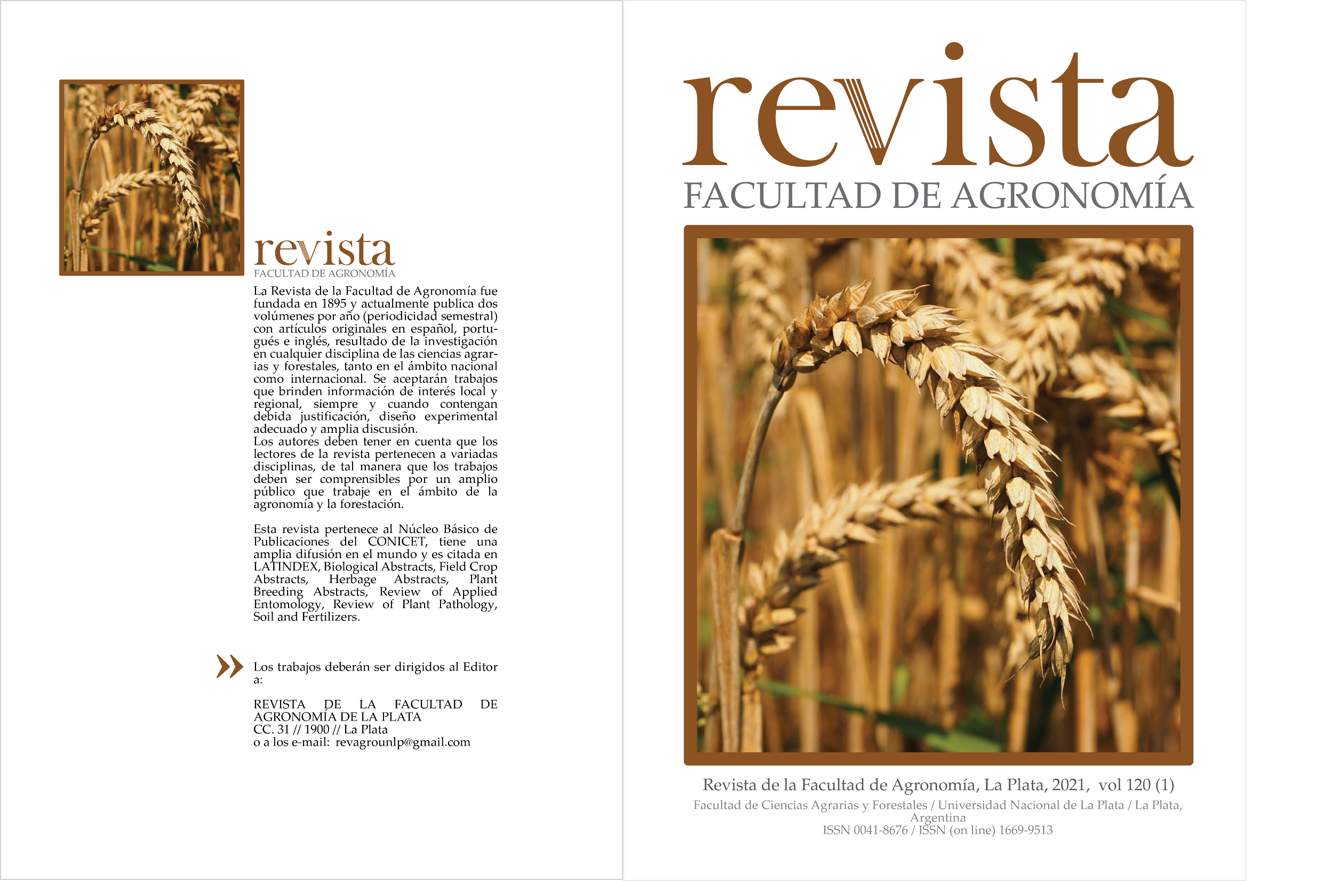Do geographical indications encourage local production?
Analysing producers’ strategies
DOI:
https://doi.org/10.24215/16699513e073Keywords:
GI labels, local products, rural development, TurkeyAbstract
Providing new production alternatives in the development of the economy in rural areas of Turkey is of particular importance. Geographical indication (GI) labelling differentiates a product from its competitors as to the region where it originated. The improvement of GI labelling production strengthens the efforts of the rural regions in maintaining high standards of the product quality regarding to the health. This paper investigates the way GI is implemented by pestil (dried fruit pulp) producers in Gumushane province in Turkey. A framework formulated is urgently needed to allow the pestil producers to promote their local product to a wider market.
Downloads
Metrics
References
Belletti, G., A. Marescotti & J.M. Touzard. 2017. Geographical indications, public goods, and sustainable development: The roles of actors’ strategies and public policies. World Development 98: 45-57.
Blakeney, M. 2017. Geographical indications and environmental protection. Frontiers of Law in China. 12(2): 162-173.
BÜMKO. 2018. Average Exchange Rates. Ministry of Treasury and Finance of The Republic of Turkey, http://www.bumko.gov.tr/TR,147/ekonomik-gostergeler.html [Accessed June 10, 2020]
Durand, C., & S. Fournier. 2017. Can geographical indications modernize Indonesian and Vietnamese agriculture? Analyzing the role of national and local governments and producers’ strategies. World Development 98: 93-104.
Giovannucci, D., E. Barham & R. Pirog. 2010. Defining and marketing “local” foods: Geographical indications for US products. The Journal of World Intellectual Property 13: 94-120.
Gümüşhane Governorship Publications. 2010. Manufacture of pestil (Fruit Pulp), Gümüşhane.
Kassie, M., P. Zikhali, M. Kebede & S. Edwards. 2009. Adoption of sustainable agriculture practices: Evidence from a semi-arid region of Ethiopia. Natural Resources Forum 33: 189-198.
Kupke, V. & G. Page. 2015. Does the farmer want a market? Factors impacting on participation by local producers in farmers markets. Pacific Rim Property Research 21: 61-75.
Lucatelli, S. 2000. Appellations of origin and geographical indications in OECD member countries: Economic and legal implications. OECD. Paris, France. 73 pp.
Maina, F.W., & J. Mburu. 2016. Assessing producers’ perceptions of protecting coffee and apple mangoes as geographical indications in Kenya. 23-26 September, 5th International Conference of AAAE, Ethiopia.
Maina, FW., C. Ackello-Ogutu, J. Mburu & H. Egelyng. 2018. Producers’ perception of geographical indications as a product diversification tool for agrifood products in semi-arid regions of Kenya. International Journal of Food and Agricultural Economics 6(2): 85-100.
Menepace, L. & G. Moschini. 2012. Quality certification by geographical indications, trademarks and firm reputatıon. European Review of Agricultural Economics 39: 539-566.
Neilson, J., J. Wright & L. Aklimawati. 2018. Geographical indications and value capture in the Indonesia coffee sector. Journal of Rural Studies 59: 35-48.
Sitepu, F.Y. 2018. The potential of Geographical Indications and its legal protection. Web of Conferences 52(17): 1-6.
Tambo, J.A. & T. Wünscher. 2017. Enhancing resilience to climate shocks through farmer innovation: evidence from northern Ghana. Regional Environmental Change 17: 1505–1514.
Tambo, J.A., E. Barake, A. Kouevi & G.T. Munthali. 2020. Copyright or copyleft: An assessment of farmer-innovators’ attitudes towards intellectual property rights. Journal of Rural Studies 74: 133-141.
Tey, Y.S., E. Li, J. Bruwer, A.M. Abdullah, M. Brindal, A. Radam, M.M. Ismail & S. Darham. 2014. The Relative importance of factors influencing the adoption of sustainable agricultural practises: a factor approach for Malaysian vegetable farmers. Sustainability Science 9: 17-29.
Vorotnikov, I., I. Sukhanova, L. Tretyak & S. Baskakov. 2017. A Logistic model of sustainable food supply of the region. Productive Forces Development and Regional Economy 164: 94-98.
Yenipınar, U., H. Köşker & S. Karacaoğlu. 2014. The importance of local food and Geographical Indications in tourism: Van Herb Cheese. Journal of Tourism and Gastronomy Studies 2: 13-23.
Yeşil, S., Ö. Çınar & E. Uzun. 2010. A field study on innovation activities of businesses operating in KahramanMaraş. The Journal of Knowledge Economy & Knowledge Management 5: 81-99.
Zhao, X., M. Kneafsey & D. Finlay. 2015. Food safety and Chinese Geographical Indications. British Food Journal 118: 217-230.
Downloads
Published
How to Cite
Issue
Section
License
A partir de 2019 (Vol. 118 número 2) los artículos se publicarán en la revista bajo una licencia Creative Commons Atribución- NoComercial-CompartirIgual 4.0 Internacional (CC BY-NC-SA 4.0)
Acorde a estos términos, el material se puede compartir (copiar y redistribuir en cualquier medio o formato) y adaptar (remezclar, transformar y crear a partir del material otra obra), siempre que a) se cite la autoría y la fuente original de su publicación (revista y URL de la obra), b) no se use para fines comerciales y c) se mantengan los mismos términos de la licencia.
Previo a esta fecha los artículos se publicaron en la revista bajo una licencia Creative Commons Atribución (CC BY)
En ambos casos, la aceptación de los originales por parte de la revista implica la cesión no exclusiva de los derechos patrimoniales de los/as autores/as en favor del editor, quien permite la reutilización, luego de su edición (posprint), bajo la licencia que corresponda según la edición.
Tal cesión supone, por un lado, que luego de su edición (posprint) en Revista de la Facultad de Agronomía las/os autoras/es pueden publicar su trabajo en cualquier idioma, medio y formato (en tales casos, se solicita que se consigne que el material fue publicado originalmente en esta revista); por otro, la autorización de los/as autores/as para que el trabajo sea cosechado por SEDICI, el repositorio institucional de la Universidad Nacional de La Plata, y sea difundido en las bases de datos que el equipo editorial considere adecuadas para incrementar la visibilidad de la publicación y de sus autores/as.
Asimismo, la revista incentiva a las/os autoras/es para que luego de su publicación en Revista de la Facultad de Agronomía depositen sus producciones en otros repositorios institucionales y temáticos, bajo el principio de que ofrecer a la sociedad la producción científica y académica sin restricciones contribuye a un mayor intercambio del conocimiento global.





























